Hoops Rumors is checking in on the 2025 offseason for all 30 NBA teams, recapping the summer’s free agent signings, trades, draft picks, departures, and more. We’ll take a look at each team’s offseason moves and consider what might still be coming before the regular season begins. Today, we’re focusing on the Oklahoma City Thunder.
Free agent signings
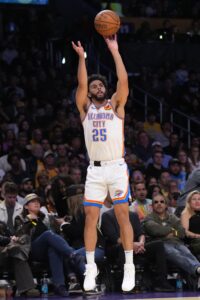 Ajay Mitchell: Three years, $8,700,000. Second year partially guaranteed ($1.5MM). Third-year team option. Re-signed using Non-Bird rights.
Ajay Mitchell: Three years, $8,700,000. Second year partially guaranteed ($1.5MM). Third-year team option. Re-signed using Non-Bird rights.- Malevy Leons: One year, minimum salary. Non-guaranteed (Exhibit 10). Signed using minimum salary exception.
Trades
- Acquired the Spurs’ 2027 first-round pick (top-16 protected) from the Kings in exchange for the draft rights to Nique Clifford (No. 24 pick).
- Acquired Colby Jones from the Wizards in exchange for Dillon Jones and the Rockets’ 2029 second-round pick.
- Note: Jones was subsequently waived by the Thunder.
Draft picks
- 1-15: Thomas Sorber
- Signed to rookie scale contract (four years, $22,512,733).
- 2-44: Brooks Barnhizer
- Signed to two-way contract.
Two-way signings
- Brooks Barnhizer
- One year, $85,300 partial guarantee (will increase to $318,218 at start of regular season).
Departed/unsigned free agents
- Branden Carlson (unsigned)
- Alex Ducas (Brisbane Bullets)
- Adam Flagler (Spurs)
Other roster moves
- Signed Shai Gilgeous-Alexander to a four-year, maximum-salary veteran contract extension that begins in 2027/28. Projected value of $285,405,792 (super-max). Includes fourth-year player option.
- Signed Jalen Williams to a five-year, maximum-salary rookie scale contract extension that begins in 2026/27. Projected value of $239,934,400. Projected value can increase to $249,531,776 if Williams makes the All-NBA third team; $259,129,152 if Williams makes the All-NBA second team; or $287,921,280 if Williams makes the All-NBA first team or is named MVP or Defensive Player of the Year.
- Signed Chet Holmgren to a five-year, maximum-salary rookie scale contract extension that begins in 2026/27. Projected value of $239,934,400.
- Signed Jaylin Williams to a three-year, $24MM veteran contract extension that begins in 2025/26. Includes third-year team option.
Salary cap situation
- Operating over the cap ($154.6MM) and below the luxury tax line ($187.9MM).
- Carrying approximately $186.9MM in salary.
- No hard cap.
- Full mid-level exception ($14,104,000) available.
- Full bi-annual exception ($5,134,000) available.
- One traded player exception ($501,669) available.
The offseason so far
A year ago, the Celtics were able to retain 13 of the 15 players from their title-winning roster. Given the rate at which modern-day NBA rosters turn over, I assumed that was an achievement that wouldn’t be repeated by another NBA champion for at least a few years.
But the Thunder aren’t just going to match that feat — they’re about to one-up the Celtics. After winning a championship this spring, Oklahoma City is set to bring back 14 members of last season’s 15-man roster. 2024 first-round pick Dillon Jones, who was traded to Washington in July in order to ensure OKC remained under the luxury tax line, is the only player who won’t be back, and he wasn’t even part of the Thunder’s rotation for the majority of the 2024/25 season.
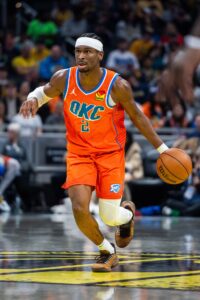 In addition to boding well for their odds of repeating as champions, the Thunder’s continuity is an indication of what sort of offseason it was in Oklahoma City. The club’s only roster additions came in the draft, when the front office used the 15th overall pick to draft Thomas Sorber and the No. 44 pick to nab Brooks Barnhizer, who will begin his career on a two-way contract.
In addition to boding well for their odds of repeating as champions, the Thunder’s continuity is an indication of what sort of offseason it was in Oklahoma City. The club’s only roster additions came in the draft, when the front office used the 15th overall pick to draft Thomas Sorber and the No. 44 pick to nab Brooks Barnhizer, who will begin his career on a two-way contract.
The Thunder won a title last season despite getting no meaningful contributions from their first-round picks, Jones and Nikola Topic, who spent the year recovering from a knee injury. With virtually the same group coming back for 2025/26, they clearly don’t have any glaring need for Sorber in the short term, so while he may get a chance to compete for a modest rotation role, I’d expect him to be brought along slowly and to spend some time in the G League as a rookie.
Oklahoma City’s most important pieces of offseason business have all been contract extensions. No NBA team this summer has extended more players – or committed more money to those extensions – than the Thunder, who signed Shai Gilgeous-Alexander to a four-year super-max contract, locked up Jalen Williams and Chet Holmgren to maximum-salary rookie scale extensions, and finalized a more modest three-year, $24MM deal for center Jaylin Williams.
There’s only so much negotiating a team can do with a maximum-salary contract, but the Thunder did well along the edges in their three mega-deals. Gilgeous-Alexander could have secured an even more lucrative five-year payday if he had waited another year to sign his next contract, but put pen to paper sooner rather than later.
More importantly, instead of simply giving Williams and Holmgren the ability to increase their first-year salaries from 25% of the cap to 30% by making any All-NBA team next season, the Thunder included escalators for Williams (detailed above) and avoided Rose Rule language for Holmgren altogether. That could really pay off in the long run, since – as we saw with Cade Cunningham and Evan Mobley this year – that 5% salary bump can have a significant impact on a team’s long-term cap situation.
As for the Jay-Will extension, it will fly under the radar compared to the other three deals – for good reason – but the $8MM-per-year agreement (which includes a third-year team option) is a savvy investment in a solid role player.
As the Thunder’s roster gets more expensive in the coming years, they’ll need players like Williams and Ajay Mitchell – who signed a three-year, $8.7MM deal as a restricted free agent – to step into the roles currently occupied by higher-salary veterans. Those new contracts line up Williams and Mitchell to be more cap-friendly alternatives to players like Isaiah Hartenstein and Isaiah Joe down the road.
Up next
With a full 15-man roster, the Thunder will likely enter the season with their current group, though it’s worth keeping an eye on former lottery pick Ousmane Dieng.
Unlike fellow 2022 first-rounders J-Dub and Holmgren, Dieng has never developed into a regular contributor in Oklahoma City and won’t be signing a rookie scale extension before his fourth year. If the team needs to open up a roster spot at some point this fall or during the season for any reason, Dieng’s spot is probably the most at risk — he’s on an expiring $6.67MM contract.
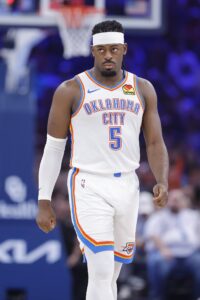 The Thunder have a pair of open two-way slots alongside Barnhizer, though one seems to be earmarked for Branden Carlson — since he reportedly agreed to a new two-way deal back on July 8, there has been no indication that it has been finalized or that the agreement has fallen through.
The Thunder have a pair of open two-way slots alongside Barnhizer, though one seems to be earmarked for Branden Carlson — since he reportedly agreed to a new two-way deal back on July 8, there has been no indication that it has been finalized or that the agreement has fallen through.
Even if we assume he gets one of OKC’s two-ways, that leaves one spot available. And given that Carlson and Mitchell showed last season that the club is willing to use its two-way players, it’s worth keeping an eye on who will get that last two-way deal.
Meanwhile, if the Thunder have one more extension agreement up their sleeves this offseason, it would probably be with Luguentz Dort, who is entering the fourth season of the five-year contract he signed as a restricted free agent in 2022.
However, the All-Defensive first-teamer likely won’t be able to reach free agency until 2027, since OKC holds a team option for 2026/27. That means the Thunder can afford to postpone serious contract talks until next offseason and decide at that point whether a raise for Dort (who is owed $36.4MM over the next two years) fits into their long-term financial plans.
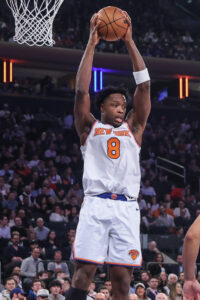

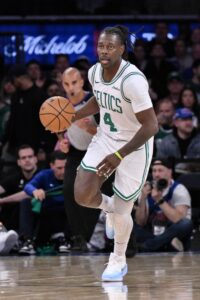 The first major agreement Portland’s front office reached this offseason was a
The first major agreement Portland’s front office reached this offseason was a 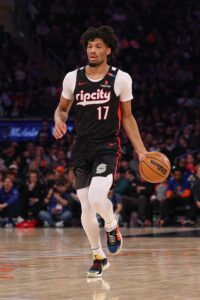 With no major roster decisions on tap in the short term, the Blazers’ biggest decision this fall may be whether or not to extend Sharpe. The former seventh overall pick has been inconsistent as a shooter and defender since entering the NBA and missed most of his second year due to an abdominal injury, but he’s an incredible athlete who is still just 22 years old and has exhibited legitimate scoring ability — he put up a career-best 18.5 points per game last season.
With no major roster decisions on tap in the short term, the Blazers’ biggest decision this fall may be whether or not to extend Sharpe. The former seventh overall pick has been inconsistent as a shooter and defender since entering the NBA and missed most of his second year due to an abdominal injury, but he’s an incredible athlete who is still just 22 years old and has exhibited legitimate scoring ability — he put up a career-best 18.5 points per game last season.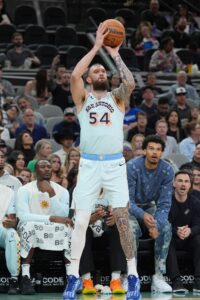
 Toronto was well on its way to a lottery finish in 2024/25 when the front office swung a deal to acquire Pelicans forward
Toronto was well on its way to a lottery finish in 2024/25 when the front office swung a deal to acquire Pelicans forward 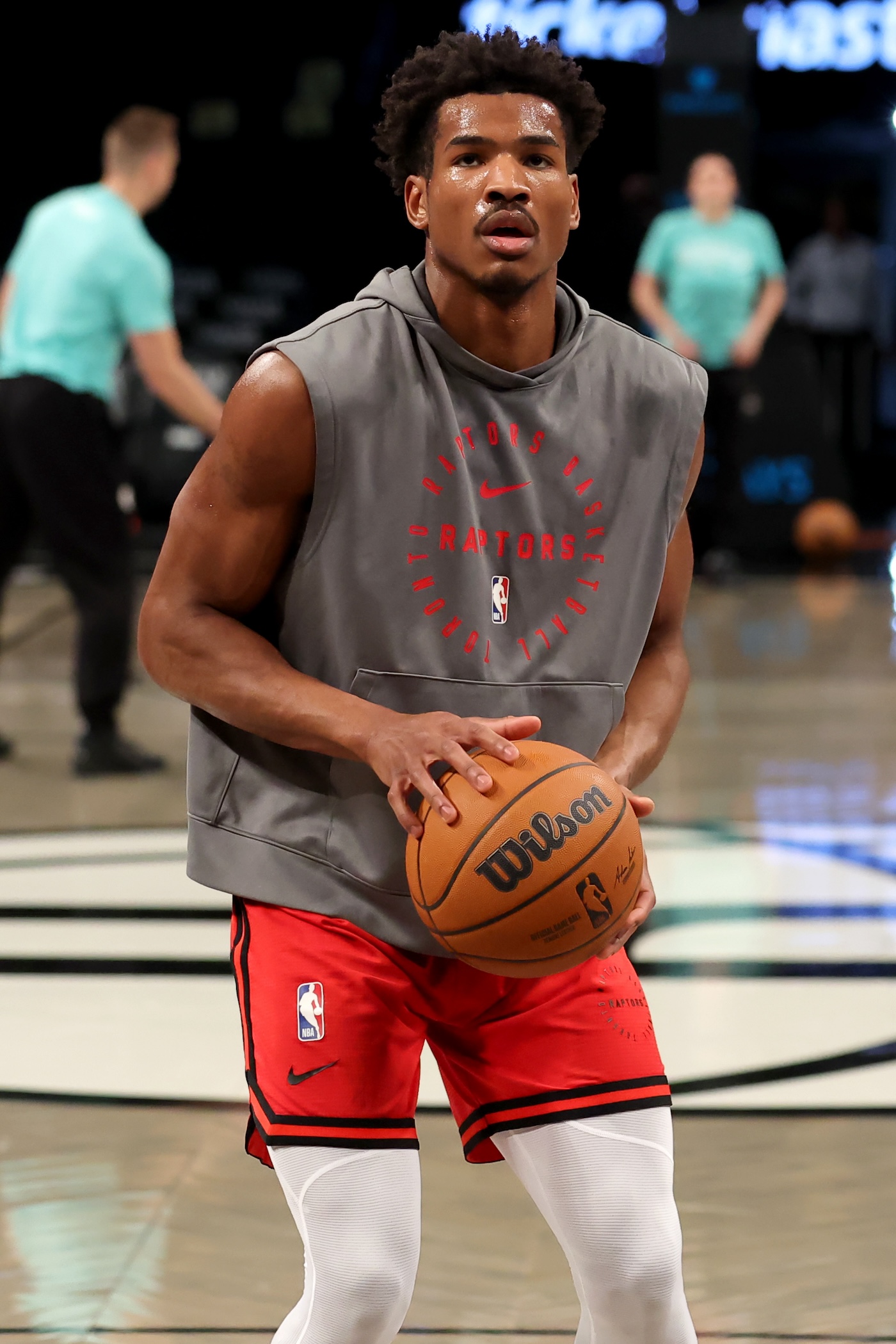 Perhaps most pressingly, the Raptors are currently operating over the luxury tax line, which presumably isn’t the end goal for a team coming off a 30-win season. They also find themselves above the first tax apron due to the incentives in the
Perhaps most pressingly, the Raptors are currently operating over the luxury tax line, which presumably isn’t the end goal for a team coming off a 30-win season. They also find themselves above the first tax apron due to the incentives in the 
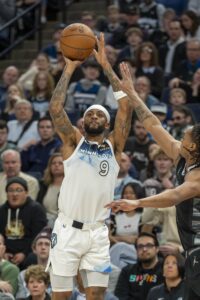
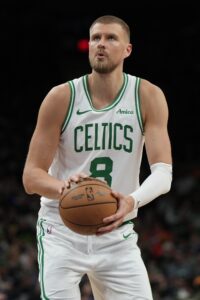 The Hawks failed to clinch a playoff spot in the play-in tournament, but given what their young core showed in the second half, it came as no surprise that the front office – headed by newly promoted general manager Onsi Saleh, who replaced Landry Fields – took an aggressive approach to upgrading its roster this offseason.
The Hawks failed to clinch a playoff spot in the play-in tournament, but given what their young core showed in the second half, it came as no surprise that the front office – headed by newly promoted general manager Onsi Saleh, who replaced Landry Fields – took an aggressive approach to upgrading its roster this offseason.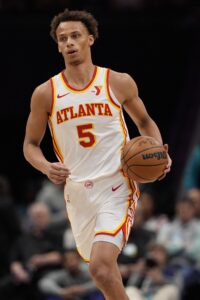 Besides filling out the back of their roster, the Hawks have some bigger-picture decisions to make regarding contract extensions for key players before the season begins. Daniels, for instance, is eligible for a rookie scale extension and would reach restricted free agency in 2026 if he doesn’t sign a new contract in 2025.
Besides filling out the back of their roster, the Hawks have some bigger-picture decisions to make regarding contract extensions for key players before the season begins. Daniels, for instance, is eligible for a rookie scale extension and would reach restricted free agency in 2026 if he doesn’t sign a new contract in 2025.